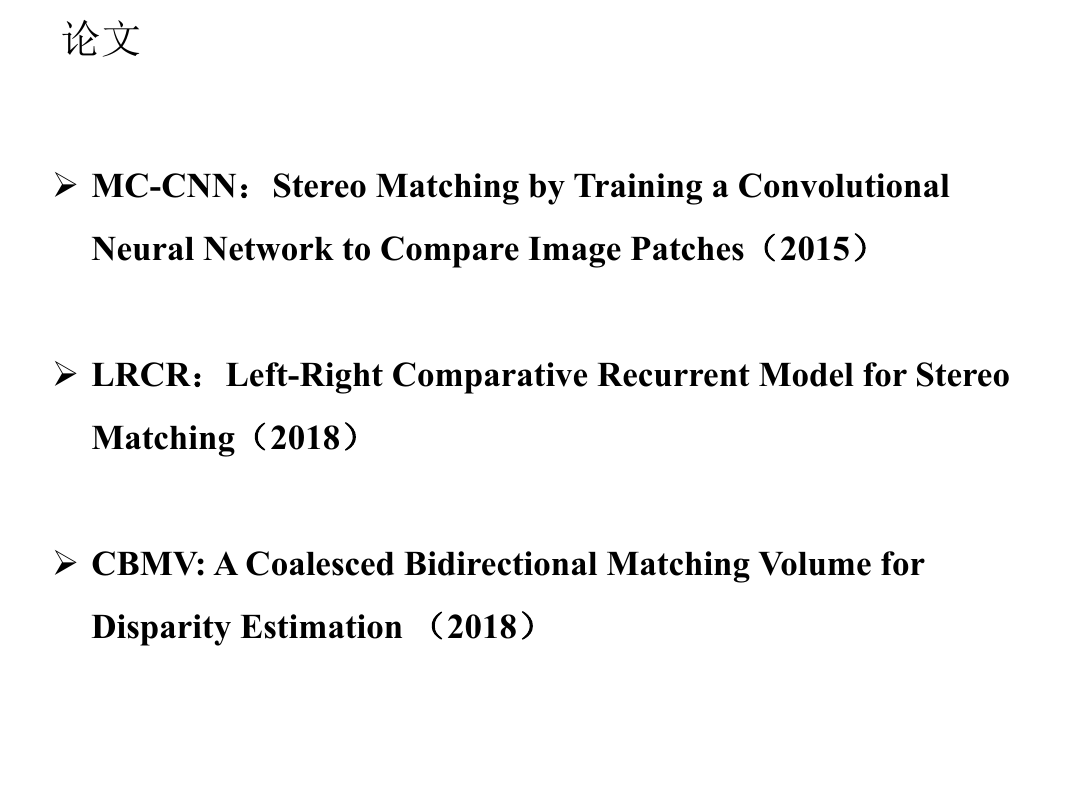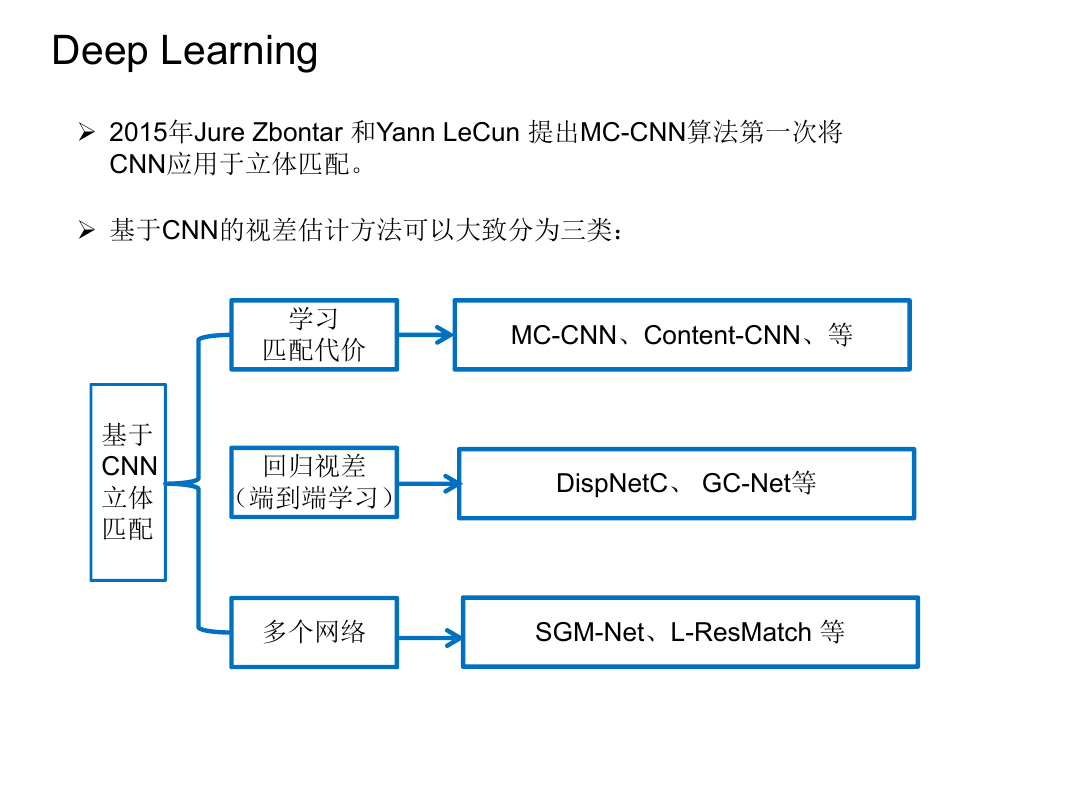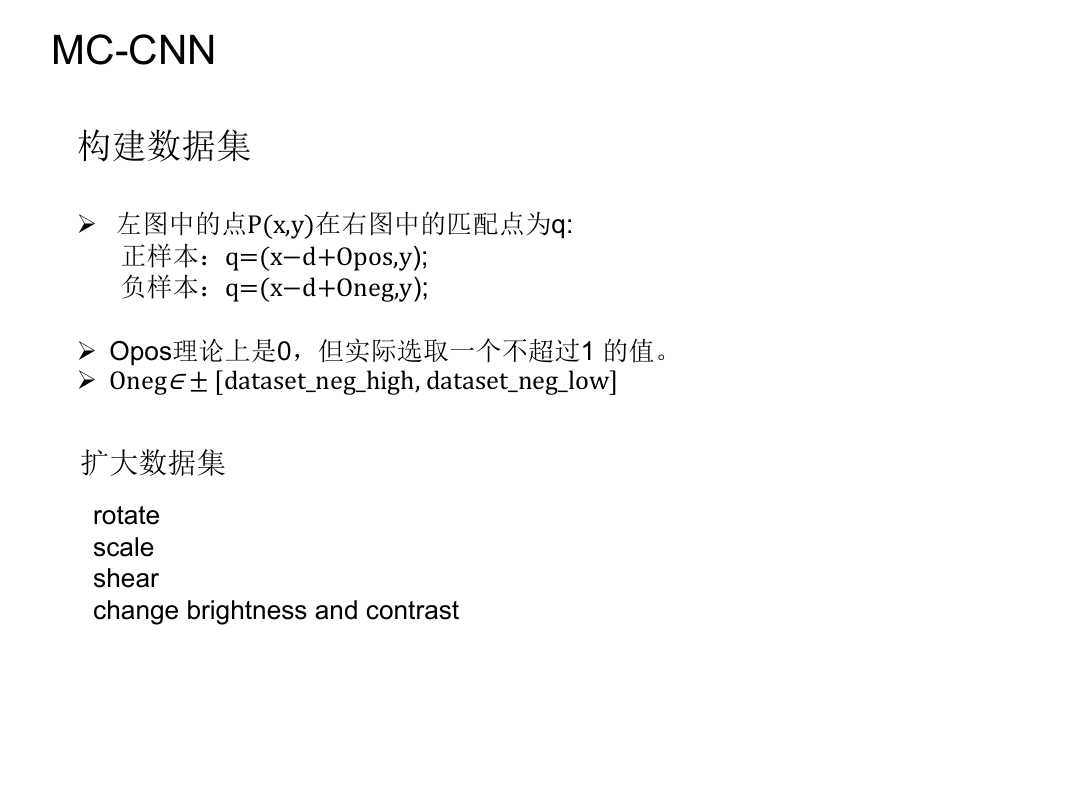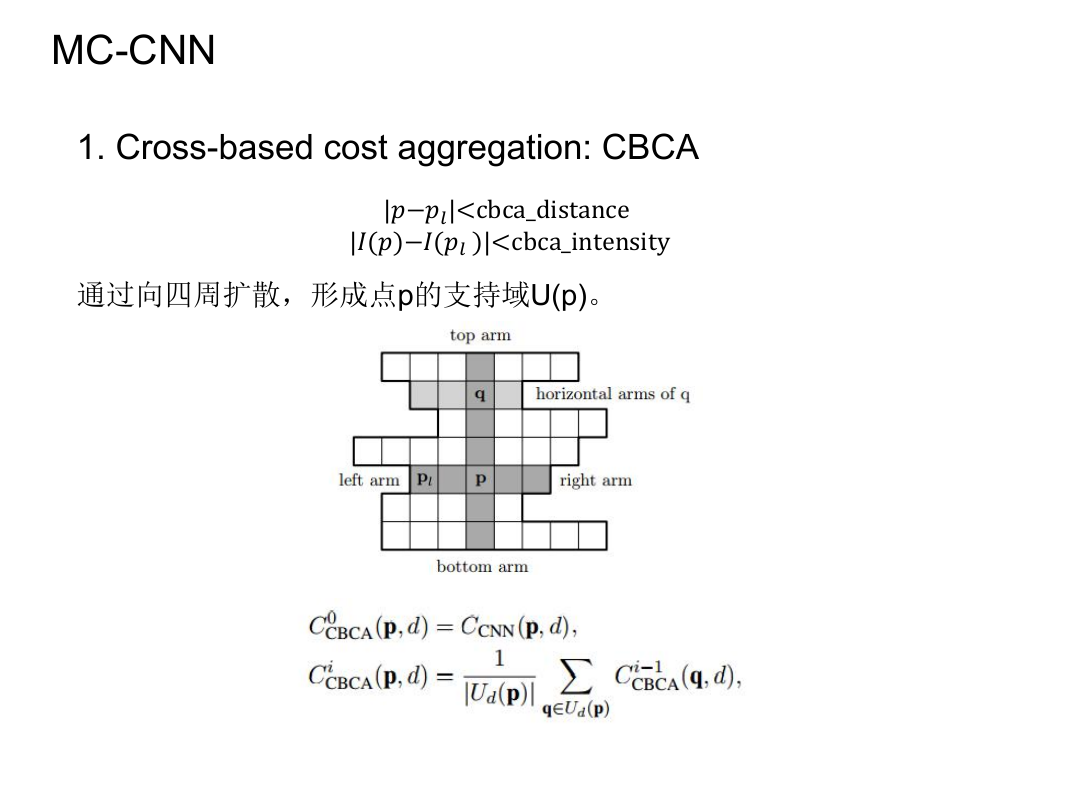双目立体视觉
8月1日
�
论文
Ø MC-CNN:Stereo Matching by Training a Convolutional
Neural Network to Compare Image Patches(2015)
Ø LRCR:Left-Right Comparative Recurrent Model for Stereo
Matching(2018)
Ø CBMV: A Coalesced Bidirectional Matching Volume for
Disparity Estimation (2018)
�
Deep Learning
Ø 2015年Jure Zbontar 和Yann LeCun 提出MC-CNN算法第一次将
CNN应用于立体匹配。
Ø 基于CNN的视差估计方法可以大致分为三类:
学习
匹配代价
MC-CNN、Content-CNN、等
基于
CNN
立体
匹配
回归视差
(端到端学习)
DispNetC、 GC-Net等
多个网络
SGM-Net、L-ResMatch 等
�
MC-CNN
构建数据集
Ø 左图中的点P(x,y)在右图中的匹配点为q:
正样本:q=(x−d+Opos,y);
负样本:q=(x−d+Oneg,y);
ØOneg∈±[dataset_neg_high, dataset_neg_low]
Ø Opos理论上是0,但实际选取一个不超过1 的值。
扩大数据集
rotate
scale
shear
change brightness and contrast
�
MC-CNN
fast architecture
Hinge s
,
s
max
0,
m
s
s
只有当正样本的相似度超过负样本的相似度
m时, 损失函数才是0 ,m=0.2.
�
MC-CNN
accurate architecture
loss
*
t
log s
1
t
*
log
1
s
.
s是网络的输出,t是其实际的样本标签,正样本为1,负样本为0
�
MC-CNN
计算匹配代价
1. 网络训练时,使用图像块进行训练;保证正样本和负样本数量相同;
2. 测试时将左右两幅图像同时输入,分别计算以每个像素为中心的图像块
的特征向量,
3. 然后根据特征向量,在视差范围内计算两个图像块之间的相似性。
MC-CNN流程图
�
MC-CNN
1. Cross-based cost aggregation: CBCA
|−|
















 2023年江西萍乡中考道德与法治真题及答案.doc
2023年江西萍乡中考道德与法治真题及答案.doc 2012年重庆南川中考生物真题及答案.doc
2012年重庆南川中考生物真题及答案.doc 2013年江西师范大学地理学综合及文艺理论基础考研真题.doc
2013年江西师范大学地理学综合及文艺理论基础考研真题.doc 2020年四川甘孜小升初语文真题及答案I卷.doc
2020年四川甘孜小升初语文真题及答案I卷.doc 2020年注册岩土工程师专业基础考试真题及答案.doc
2020年注册岩土工程师专业基础考试真题及答案.doc 2023-2024学年福建省厦门市九年级上学期数学月考试题及答案.doc
2023-2024学年福建省厦门市九年级上学期数学月考试题及答案.doc 2021-2022学年辽宁省沈阳市大东区九年级上学期语文期末试题及答案.doc
2021-2022学年辽宁省沈阳市大东区九年级上学期语文期末试题及答案.doc 2022-2023学年北京东城区初三第一学期物理期末试卷及答案.doc
2022-2023学年北京东城区初三第一学期物理期末试卷及答案.doc 2018上半年江西教师资格初中地理学科知识与教学能力真题及答案.doc
2018上半年江西教师资格初中地理学科知识与教学能力真题及答案.doc 2012年河北国家公务员申论考试真题及答案-省级.doc
2012年河北国家公务员申论考试真题及答案-省级.doc 2020-2021学年江苏省扬州市江都区邵樊片九年级上学期数学第一次质量检测试题及答案.doc
2020-2021学年江苏省扬州市江都区邵樊片九年级上学期数学第一次质量检测试题及答案.doc 2022下半年黑龙江教师资格证中学综合素质真题及答案.doc
2022下半年黑龙江教师资格证中学综合素质真题及答案.doc